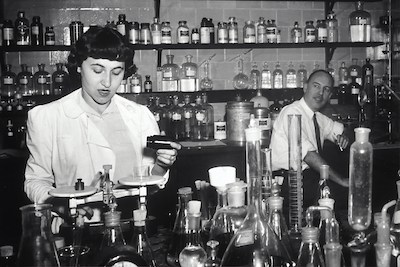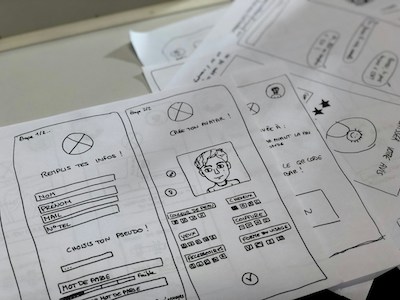
Photo by National Cancer Institute
The example product we’ve used in the first and second articles in this series is a tropical destination resort. The product owner of the resort believes that they should add a business center to the resort. They have created this user story.
As a businessperson,
I want a business center with printing, copying, and faxing available,
so that I can get a little work done without leaving the resort.
Let’s examine a way that the product owner could test the value of the proposed business center without implementing any business center functionality at all. The product owner will create a hypothesis statement that describes what they think should be built and how they will test the value before building.
As a businessperson,
I want a business center with printing, copying, and faxing available,
so that I can get a little work done without leaving the resort.
This will be confirmed when at least 10% of survey respondents indicate that they did printing, copying, or faxing on their last vacation.
In this case, the product owner will use a survey to test their belief that a business center would be a valuable feature to add to the resort. Here are several other product discovery techniques that can be used to run such an experiment.
Customer Interviews
Conducting customer interviews is a great way to test your product hypotheses. Interviewing potential customers is almost always a cheaper and faster way to learn what your customers’ needs are, compared to building the product or feature and then seeing if your users like it.
Learn More About Customer Interviews
- Customer Interview For Product Discovery
- Customer Interviews: How to Recruit, What to Ask, and How to Synthesize What You Learn
- How to find the best features to build using the right customer interview questions
Surveys
Surveys allow you to gain quantitative and qualitative information that can be used to test your product hypotheses.
Learn More About Surveys
- Product Experiment: Close-Ended Surveys
- Product-Market Fit Survey
- User Experience (UX) Surveys: The Ultimate Guide
- Wikipedia article on survey methodology
Focus Groups
A focus group is a group interview of demographically similar people, used to understand people’s needs and pain points, as well as their reactions to proposed products or features to meet those needs. The discussions can be guided or open.
Learn More About Focus Groups
- How To Conduct Focus Groups
- How To Conduct Effective Product Focus Groups
- Targeted Focus Groups In Product Development
- Wikipedia article on focus groups
Card Sorting
Card sorting is a technique to learn how users of a product think about and naturally categorize the various aspects of the product including the underlying data that the product makes available to users. Use of card sorting can lead to more intuitive user interfaces.
Learn More About Card Sorting
- Wikipedia article on card sorting
- Card Sorting — a how-to guide
- Video: What’s Card Sorting in User Experience Research?
Software Prototyping
Building a working mock-up of new features allows rapid testing with users and promotes rapid iteration on the design.
Learn More About Software Prototyping
Paper Prototyping

Photo by Amélie Mourichon
Learn More About Paper Prototyping
